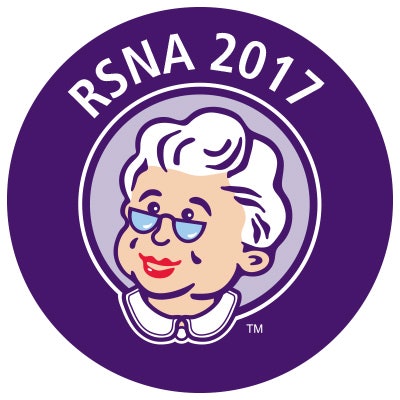
CHICAGO - How dependable are guidelines from the Society of Radiologists in Ultrasound (SRU) for evaluating advanced fibrosis in patients with cirrhosis? There's room for improvement, according to research delivered on Monday at the RSNA 2017 meeting.
A team led by presenter Dr. Amol Shah of the University of Pennsylvania assessed the shear-wave velocities (SWVs) of patients with known hepatic cirrhosis, comparing each patient's value with the cutoff measurement for advanced fibrosis established by recent SRU guidelines (> 2.2 m/sec). The researchers found that 88% of patients with cirrhosis showed an SWV of less than this cutoff measurement.
"The current SRU cutoff of an SWV greater than 2.2 m/sec misses the majority of patients with advanced fibrosis," Shah said. "A revision of these guidelines may be necessary in the near future."
Better evaluation tool?
 Dr. Amol Shah from the University of Pennsylvania.
Dr. Amol Shah from the University of Pennsylvania.Fibrosis staging helps determine prognosis, treatment, and surveillance, and for years, liver biopsy has been the gold standard for evaluating fibrosis. But biopsy has its drawbacks: It's invasive, with severe complications for some patients, and there's also the fact that tissue taken during liver biopsy is only a small part of the entire liver and is subject to sampling error.
Shear-wave elastography offers a noninvasive tool to assess liver stiffness -- and thus fibrosis, Shah said. So it's crucial to establish accurate guidelines for using the technology for this purpose if it is to be effective, especially because a variety of factors, such as active inflammation, patient comorbidities, obesity, and even machine/probe differences by manufacturer, can complicate the measure of tissue stiffness, he said.
"We need an accurate and noninvasive method for liver fibrosis assessment," he told session attendees.
The SRU's guideline of shear-wave velocity of more than 2.2 m/sec -- which is equal to a stiffness greater than 15 kPa -- may not capture all patients with advanced fibrosis, Shah said.
"Anecdotally, in our practice, patients with advanced fibrosis rarely demonstrate tissue stiffness of more than 15 kPa," he said. "This is likely due to significant improvement in treatment of chronic viral hepatitis over the last few years."
Correcting the cutoff
Shah and colleagues sought to evaluate whether patients with known hepatic cirrhosis had shear-wave velocities greater than 2.2 m/sec. The group also sought to identify potential patient or technique-related factors that might lower otherwise expected high stiffness measurements in patients with cirrhosis.
The study was conducted at two sites: the University of Pennsylvania and the University of Texas (UT) Southwestern. Eighty-two patients with known cirrhosis underwent acoustic radiation force impulse shear-wave elastography. For each exam, the researchers noted 10 shear-wave velocity measurements; the median was considered the final velocity.
The measurements ranged from 1.17 m/sec to 2.66 m/sec, with the majority of patients (88%) showing a shear-wave velocity less than the SRU cutoff; in fact, only 10 patients (12%) met the SRU's thresholds:
- No significant fibrosis (SWV < 1.37 m/sec): 13%
- Intermediate fibrosis (SWV 1.37-2.2 m/sec): 75%
- Advanced fibrosis (SWV > 2.2 m/sec): 12%
"The vast majority of patients with cirrhosis -- 88% -- showed SWV of less than the SRU cutoff of greater than 2.2 m/sec," Shah said.
The research findings show that the SRU's liver stiffness thresholds need to be revisited, Shah told AuntMinnie.com.
"With better treatment and patient clinical profiling, it becomes important to reassess the liver stiffness values in patients with advanced fibrosis with an aim to re-establish the optimal threshold on liver elastography exams," he said.



















